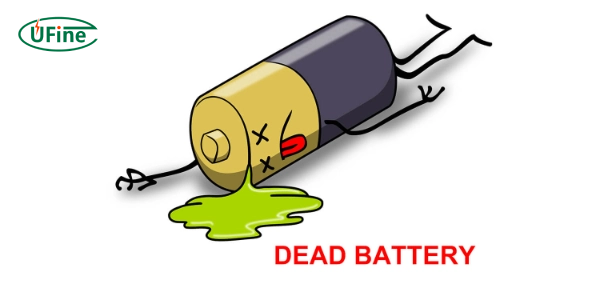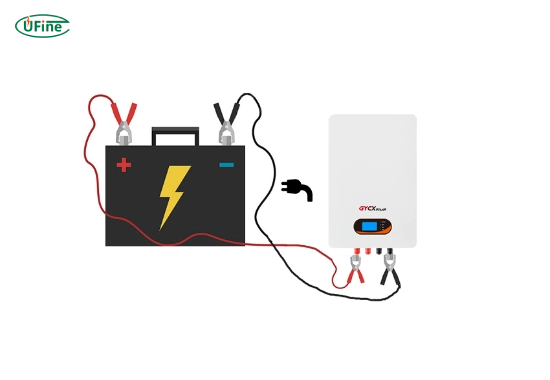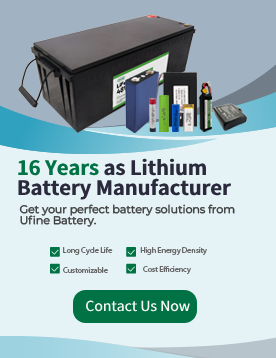
- Part 1. Causes of dead batteries
- Part 2. Quick steps to revive a dead lithium-ion battery
- Part 3. Safe & risky methods to revive a lithium-ion battery
- Part 4. How to fix a lithium-ion battery that won’t charge
- Part 5. How long can a lithium-ion battery last without charging?
- Part 6. Importance of battery maintenance
- Part 7. FAQs about reviving dead batteries
Staring at a dead lithium-ion battery that refuses to charge? Before buying a replacement, you can try to revive it safely. This guide explains how to revive a dead battery, fix lithium-ion batteries that won’t charge, troubleshoot common lithium battery issues, and maximize battery lifespan.
Part 1. Causes of dead batteries
- Overcharging: Leaving devices plugged in for long periods can damage lithium-ion batteries, causing them to lose capacity or fail to charge.
- High Temperatures: Heat accelerates chemical reactions, degrading lithium battery health and creating battery will not charge issues.
- Deep Discharge: Allowing batteries to fully drain before recharging can reduce lifespan and cause flat lithium ion battery problems.
- Physical Damage: Dropping or mishandling can lead to internal short circuits, leaks, or completely dead batteries.
- Age and Wear: Batteries degrade with repeated charge cycles, leading to decreased capacity and potential lithium ion battery charger not working.
- Manufacturing Defects: Defective cells may fail prematurely, causing battery repair needs or dead battery conditions.
- Software Glitches: Device software may incorrectly report battery levels or prevent proper charging.
- Low Voltage Conditions: Running batteries under low voltage stress can irreversibly damage lithium cells.
- Improper Storage: Extreme temperature or humidity can accelerate degradation, leading to empty battery issues.
- Non-Optimal Charging Practices: Using incompatible chargers may cause overcharge or undercharge, resulting in lithium battery issues.
Part 2. Quick steps to revive a dead lithium-ion battery
Quick Steps to Revive a Dead Lithium-Ion Battery:
- Connect to the original charger for 12–24 hours to attempt recovery
- Check charging cables, ports, and power sources to fix lithium battery issues
- Allow cold batteries to reach room temperature before charging
- Use a battery reconditioner for deeply discharged cells
Safety Note: Avoid freezing or forced overcharging, as these can permanently damage lithium-ion batteries.
Part 3. Safe & risky methods to revive a lithium-ion battery
Reviving a dead battery requires caution. Prioritize safe methods before considering risky options:
Safe Methods to Try First
1. Recharge the Battery (Patience is Key)
The simplest way to revive a dead battery is to recharge it. Connect to the correct charger for an extended period (12-24 hours). Use original chargers when possible. This is the most fundamental step in reviving a dead battery.
2. Use a Battery Reconditioner/Recovery Charger
Battery reconditioners apply specialized cycles to restore deeply discharged batteries. They’re the most reliable tools for reviving a dead battery without damage.
3. Warm Up the Battery
If cold, let batteries warm naturally to room temperature. Avoid direct heat sources which may damage cells.
4. Check Connections & Reset
Clean charging ports/cables with isopropyl alcohol. Try different outlets/cables. Perform device hard resets.
Controversial & Risky Methods (Not Recommended)
5. The Freeze Method (High Risk)
Expert Warning: Freezing lithium batteries is widely discouraged due to:
- Moisture damage from condensation
- Physical stress from temperature changes
- Permanent capacity reduction
- Fire risk when thawing
If attempted: Double-seal in airtight bags, freeze max 2-3 hours, thaw completely before charging.
6. Jump-Starting Lithium Batteries
Only applicable to car lead-acid batteries. Requires professional equipment for lithium cells and can cause permanent damage.
7. Controlled Overcharge (Extreme Hazard)
Can cause thermal runaway and explosions. Only for professionals with safety equipment.
Part 4. How to fix a lithium-ion battery that won’t charge
- Check Charging Hardware for Lithium-Ion Battery: Inspect cables, clean ports with isopropyl alcohol, and test different chargers/outlets.
- Hard Reset to Fix Lithium Battery Issues: Power off device, remove battery (if possible), hold power button 30 seconds, reinsert battery, and recharge.
- Reset Battery Management System: Fully discharge and charge uninterrupted to 100% to cycle the internal controller.
- Diagnose Physical Issues: Look for swelling, leaks, or damage. Older batteries may be beyond revival.
- Professional Testing: Battery specialists can determine if the issue is with the battery, charging circuit, or device.
- Battery Replacement: When revival fails, replace with OEM batteries; avoid cheap alternatives.
Critical Safety Notice: Avoid freezing or forced overcharging—these often cause permanent damage.
Part 5. How long can a lithium-ion battery last without charging?
Self-Discharge Rate
Lithium-ion batteries naturally lose charge over time, even when not in use. The self-discharge rate differs between battery models but is generally low. On average, a lithium-ion battery can retain approximately 80% of its charge after one month of inactivity.
Battery Capacity
The battery’s initial capacity also plays a role. Higher-capacity batteries tend to retain their charge for longer periods than lower-capacity ones. However, the self-discharge rate remains a factor, regardless of the battery’s capacity.
Part 6. Importance of battery maintenance
Prevent dead batteries with these essential maintenance practices:
Battery Maintenance Checklist
- Charge Smart: Keep between 20-80% for daily use
- Temperature Control: Avoid exposure to temperatures above 35°C/95°F
- Use Approved Chargers: Only use manufacturer-certified charging equipment
- Storage Protocol: Maintain 40-60% charge in cool, dry environments
- Regular Usage: Exercise batteries monthly if stored long-term
Key Benefits of Proper Maintenance
- Prevents Premature Failure
Eliminates common causes of dead batteries including deep discharge and thermal damage
- Extends Service Life
Properly maintained lithium-ion batteries last 2-3x longer than neglected units
- Ensures Reliable Performance
Maintained batteries deliver consistent capacity and stable voltage output
- Cost Efficiency
Saves 60-80% on replacement costs over the device’s lifetime
- Environmental Protection
Reduces hazardous waste by minimizing battery replacements
Essential Maintenance Guides
Part 7. FAQs about reviving dead batteries
Can you really revive a dead lithium-ion battery that won’t charge?
Sometimes yes, but not always. If the battery is deeply discharged but not physically damaged, long recharge or using a battery reconditioner may work. Old or damaged batteries usually need replacement.
Is freezing a lithium battery safe for revival?
No. Freezing carries high risks including moisture damage, physical stress, reduced capacity, and potential fire or leaks. Use safer alternatives like reconditioners.
How long should I try charging a dead battery before giving up?
Charge on the correct charger for at least 12–24 hours. If the device shows no sign of life, check connections and try another charger/cable before concluding it cannot be revived.
My battery revives but dies quickly. What does this mean?
Severe capacity loss due to age, deep discharges, or damage. Temporary revival may work, but replacement is the only permanent solution.
Related Tags:
More Articles

Battery Load Test: A Comprehensive Guide
Step-by-step battery load test guide for car, solar & industrial use. Learn how to load test a battery, interpret voltage charts, and avoid common mistakes.
The Comprehensive Guide to Battery Balancing and Battery Balancer
Discover how battery balancers improve lithium battery performance, lifespan, and safety. Learn types, functions, and tips to choose the right balancer.
What Is the Best Voltage for a Chainsaw Battery?
Compare 12V-80V chainsaw batteries for light pruning, medium firewood, and professional cutting. See best battery chainsaw with runtime charts and safety tips.
Lithium VS. Alkaline Batteries: A Comprehensive Comparison
Lithium batteries last 3–7× longer than alkaline and perform better in cold weather. Compare lifespan, cost, safety, and best uses to choose the right battery.
Comparing Lithium-Sulfur and Lithium-Ion Batteries: Which is Right for You?
Compare lithium-sulfur (Li-S) and lithium-ion batteries on energy, lifespan, cost, safety, and applications. Best choice for drones, EVs, and electronics.




